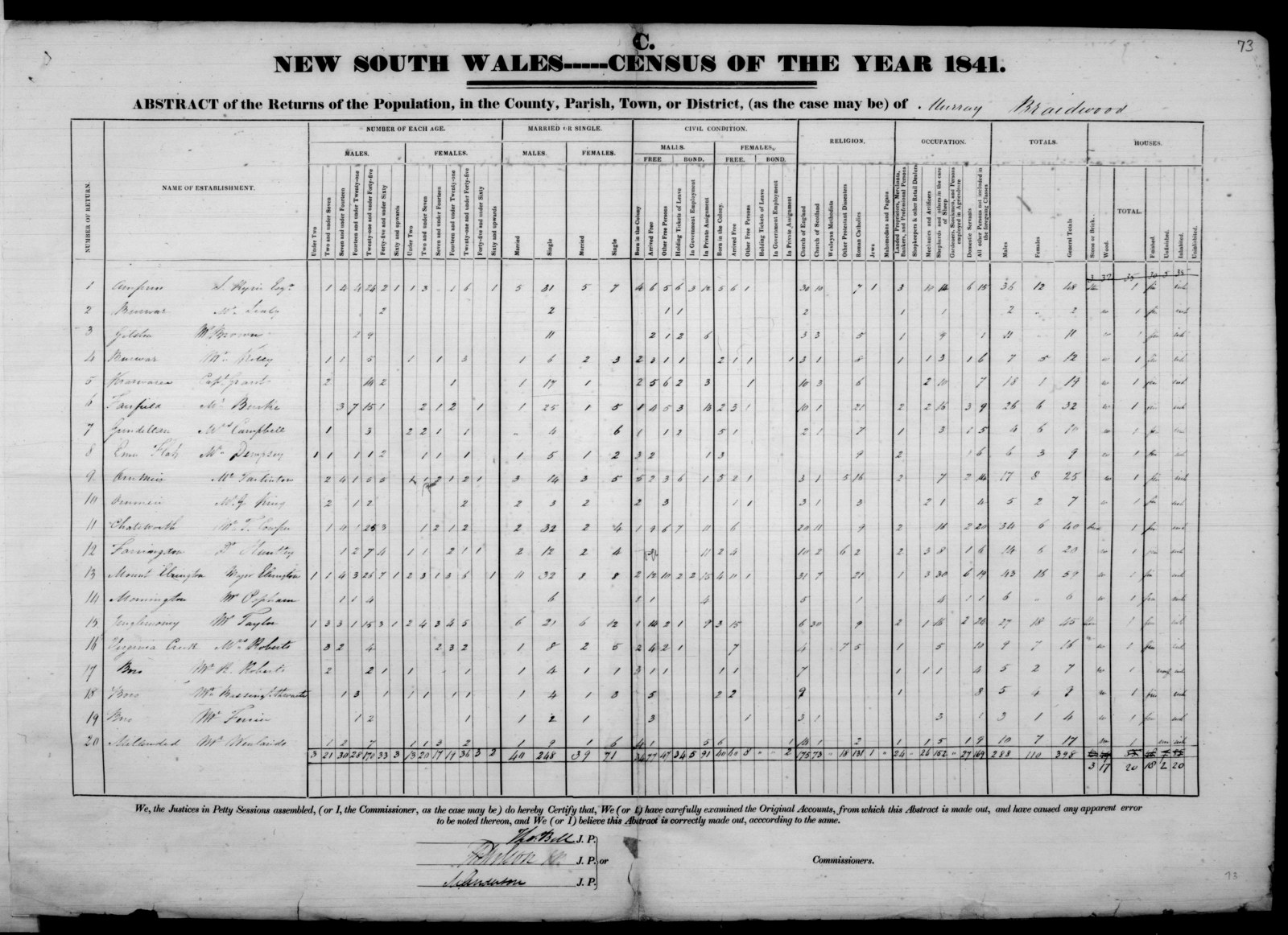1828 Census
1828 Census inscribed on the UNESCO Australian Memory of the World Register
We are thrilled that records of the 1828 Census of NSW which we hold as part of the State Archives Collection have been inscribed on the UNESCO Australian Memory of the World Register. This is wonderful national and international recognition of the State Archives Collection and our work in preserving and making accessible the State’s archives.
The 1828 Census was the first official census undertaken by NSW after it was found the Governor had no authority to compel free men to come to a muster – the previous means of counting the colony’s population.
Browse the alphabetical returns by surname
The Census covers some 36,500 inhabitants, both convict and free, and captures a social and economic picture of the Colony of NSW in November 1828, 40 years after the Colony’s establishment. It covers all settlements within the jurisdiction of the then colony of NSW including Moreton Bay and Norfolk Island,
It records such detailed information for each person (including children) as name, age, if free or convict, if born in the colony or ship and year of arrival, sentence if arrived as a convict, religion, employment, residence, district, total number of acres, acres cleared, acres cultivated, horses, horned cattle, sheep, and remarks.
- The digitised records are from Alphabetical Return, 1828 (NRS-1272)
A to Col
COL to GOR
GOR to LEN
LEN to POP
POP to TIG
TIL to ZEA
The records inscribed on the UNESCO Australian Memory of the World Register include:
Related
Blue Books (Returns of the Colony) 1822-57
Statistical returns of the Colony of New South Wales and of areas under its jurisdiction compiled annually from 1822 to 1857

Census - 1841
The 1841 Census lists all the surviving householders' returns (heads of households only) and abstracts of returns

1828 Census - mini webinar
The 1828 Census alphabetical returns are digitised and can be viewed online. This webinar takes a close look at the returns and what they can tell you

1828 Census - extended webinar
Learn about the 1828 Census and why it was so significant. It has recently been added to the UNESCO Australian Memory of the World Register